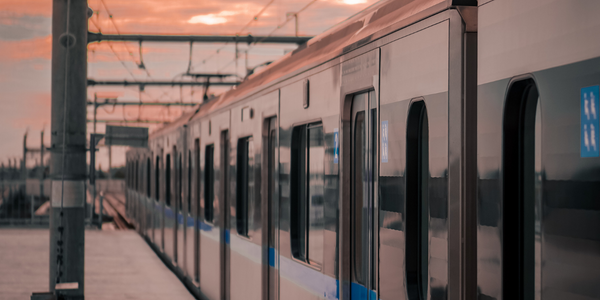技术
- 自动化与控制 - 监督控制和数据采集 (SCADA)
- 传感器 - 温度传感器
适用行业
- 建筑与基础设施
- 铁路与地铁
适用功能
- 维护
- 产品研发
用例
- 施工管理
- 智慧校园
服务
- 系统集成
关于客户
Skanska Costain STRABAG JV (SCS) 是一家合资企业,负责为英国高速 2 (HS2) 铁路项目第一阶段进行土建工程。该项目是英国有史以来最复杂、最具挑战性的铁路项目之一。 HS2 项目旨在使该国的交通网络容量增加两倍,每天运送超过 30,000 名乘客。 SCS 的任务是为政府节省 5 亿英镑的数字效率,并致力于在设计和施工中应用全球最佳实践,根据 PAS 1192 BIM 标准设定严格的数据和建模要求。
挑战
高速 2 号 (HS2) 铁路项目是欧洲最大的建设合同,对英国来说是一项复杂且具有挑战性的举措。该项目旨在使该国的交通网络容量增加两倍,每天运送超过 30,000 名乘客。 Skanska Costain STRABAG JV (SCS) 承包了 HS2 第一阶段的土建工程,其中包括一条连接伦敦和伯明翰、全长 230 公里的线路。该合同要求承包商尽早与设计人员一起在14个月内制定并批准26公里高铁的概念设计方案。该项目预计耗资 150 万英镑,为优化效率并满足客户的数字 BIM 需求带来了工程和协调方面的挑战。 SCS 需要互操作技术来实施全面的协作 BIM 策略,以适应现有的英国铁路系统和大约 6,000 个公用事业资产,并协调地理上分散的多学科团队。
解决方案
SCS 制定了一项让整个团队参与的 BIM 执行策略,其中包括从 4D 施工管理到物流和运营的建模指南和程序。该团队首先生成一个内容计划,定义模型分解和结构,从要添加到模型的资产开始,然后是要合并的元素。承包商和设计师通过 OpenBuildings Designer 作为主要建模应用程序创建了在 ProjectWise 内共享的组件库。在一个位置建立数据库可以为所有相关团队成员提供更有效的工作流程。该定制组件库确保所有元素都是相同的,并且模型数据基于预定义的标准,从而证明估计、规划、可施工性和安全性的一致性和准确性。 SCS 使用 ProjectWise 和 AssetWise 建立了一个互连的数据环境,使项目团队可以通过 Bentley 的集成建模应用程序随时随地实时访问可信信息。
运营影响
数量效益

Case Study missing?
Start adding your own!
Register with your work email and create a new case study profile for your business.
相关案例.

Case Study
IoT System for Tunnel Construction
The Zenitaka Corporation ('Zenitaka') has two major business areas: its architectural business focuses on structures such as government buildings, office buildings, and commercial facilities, while its civil engineering business is targeted at structures such as tunnels, bridges and dams. Within these areas, there presented two issues that have always persisted in regard to the construction of mountain tunnels. These issues are 'improving safety" and "reducing energy consumption". Mountain tunnels construction requires a massive amount of electricity. This is because there are many kinds of electrical equipment being used day and night, including construction machinery, construction lighting, and ventilating fan. Despite this, the amount of power consumption is generally not tightly managed. In many cases, the exact amount of power consumption is only ascertained when the bill from the power company becomes available. Sometimes, corporations install demand-monitoring equipment to help curb the maximum power demanded. However, even in these cases, the devices only allow the total volume of power consumption to be ascertained, or they may issue warnings to prevent the contracted volume of power from being exceeded. In order to tackle the issue of reducing power consumption, it was first necessary to obtain an accurate breakdown of how much power was being used in each particular area. In other words, we needed to be able to visualize the amount of power being consumed. Safety, was also not being managed very rigorously. Even now, tunnel construction sites often use a 'name label' system for managing entry into the work site. Specifically, red labels with white reverse sides that bear the workers' names on both sides are displayed at the tunnel work site entrance. The workers themselves then flip the name label to the appropriate side when entering or exiting from the work site to indicate whether or not they are working inside the tunnel at any given time. If a worker forgets to flip his or her name label when entering or exiting from the tunnel, management cannot be performed effectively. In order to tackle the challenges mentioned above, Zenitaka decided to build a system that could improve the safety of tunnel construction as well as reduce the amount of power consumed. In other words, this new system would facilitate a clear picture of which workers were working in each location at the mountain tunnel construction site, as well as which processes were being carried out at those respective locations at any given time. The system would maintain the safety of all workers while also carefully controlling the electrical equipment to reduce unnecessary power consumption. Having decided on the concept, our next concern was whether there existed any kind of robust hardware that would not break down at the construction work site, that could move freely in response to changes in the working environment, and that could accurately detect workers and vehicles using radio frequency identification (RFID). Given that this system would involve many components that were new to Zenitaka, we decided to enlist the cooperation of E.I.Sol Co., Ltd. ('E.I.Sol') as our joint development partner, as they had provided us with a highly practical proposal.

Case Study
Splunk Partnership Ties Together Big Data & IoT Services
Splunk was faced with the need to meet emerging customer demands for interfacing IoT projects to its suite of services. The company required an IoT partner that would be able to easily and quickly integrate with its Splunk Enterprise platform, rather than allocating development resources and time to building out an IoT interface and application platform.

Case Study
Bridge monitoring in Hamburg Port
Kattwyk Bridge is used for both rail and road transport, and it has played an important role in the Port of Hamburg since 1973. However, the increasing pressure from traffic requires a monitoring solution. The goal of the project is to assess in real-time the bridge's status and dynamic responses to traffic and lift processes.

Case Study
Building Smart IoT-Connected Railways
• Difficult environment. Communications equipment on trains must function properly in harsh conditions, such as environment temperatures ranging from -25°C to +85°C, according to the EU standard EN50155.• Railway regulations. All products in a train must adhere to strict standards, relating to working vibration, power consumption, and lifetime.• Lengthy process. Time to market in the railway industry can take years from concept to mass production, so product design requires a solid long term vision.

Case Study
Bellas Landscaping
Leading landscaping firm serving central Illinois streamlines operations with Samsara’s real-time fleet tracking solution: • 30+ vehicle fleet includes International Terrastar dump trucks and flatbeds, medium- and light-duty pickups from Ford and Chevrolet. Winter fleet includes of snow plows and salters.








